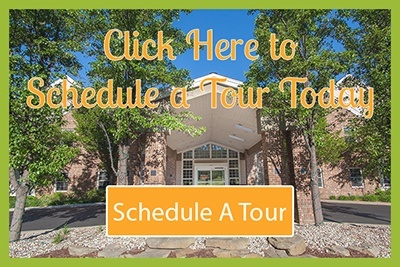
Making the decision to move yourself or a loved one into an assisted living facility is often fraught with fear and misgivings that can make the move more difficult than it has to be. As you begin to consider the possibility of assisted living, take a good look at what you can actually expect, not what you have heard or imagined it will be like. While you can expect life to change in assisted living, it is often for the better and the more you know before you go, the happier you or your loved one will be long term. Understanding some of the pros and cons of assisted living is a good place to start.
Pros of Moving to an Assisted Living Community
Help on hand: Assisted living is, by definition, a place where residents receive the help they need with meals, medications, daily personal hygiene and dressing, housekeeping, and transportation. While assisted living does not provide skilled nursing care, on-site medical professionals may be available.
Flexibility: There are many levels of care available in assisted living communities, so as needs change, more or less assistance can be provided. This seamless adaption to changing needs is especially great if you or your loved one have early dementia or health concerns that may not yet require nursing care.
Lower cost: Assisted living communities are less costly than nursing homes. As long as continuous medical care is not required, assisted living is a good option for living safely and comfortably. The National Institutes of Health explains how to finance long-term care in the article, “Paying for Care.”
Privacy and independence: In assisted living you have your own apartment with your own furniture, pictures and so on. You may also have a kitchen where you can prepare meals if you like, or just a kitchenette with a sink and refrigerator. Like your home, your apartment is your personal space and is not open to others without your consent. You retain your independence and freedom to enjoy life without all the hardships that come with maintaining a home and lawn.
Socialization: One of the best aspects of assisted living is that you are not alone, but part of a community of people with similar life experiences and desires. You will make new friends and have the opportunity to take part in a range of activities like arts and crafts, field trips, exercise classes, music, and dancing in common areas. If you choose, you can also enjoy meals with friends and forget about doing the dishes and cleaning up the kitchen! Whether at home or in an assisted living community, the NIH has a great infographic offering ways to combat loneliness.
Safety and security: Assisted living communities offer a level of safety and security you cannot get living alone in your home. Having staff available 24/7 in case of an emergency offers peace of mind to residents and their families. Facilities also offer a range of features to keep residents safe from in-room alarms to the latest fire response equipment to disaster plans for a range of emergency situations. Newer assisted living communities were also designed and built for seniors so there are no stairs to climb, hallways and rooms are well-lit, and accessibility is built in.
Cons of Moving to an Assisted Living Community
Transitioning can be difficult: Even if you are looking forward to the move to assisted living, you can expect the change to bring feelings of loss or sadness. If you or a loved one are not excited about the move to assisted living, these feelings may be more pronounced, and you may even feel abandoned or unloved. But the truth is, any major life change can bring on these feelings and they are normal. How you deal with them is the key to your happiness. The National Center for Assisted Living at the American Health Care Association offers an in-depth look at how to smooth the transition to assisted living in its guide, “Moving Into An Assisted Living Residence: Making a Successful Transition.”
There will be rules and policies: Living alone allows you to make your own rules, but living in a community means the rules are in the best interest of everyone. Keep in mind that many rules are prompted by state of federal regulations and are intended to ensure the safety of all. For a better understanding of the regulations in your state, take a look at the NCAL’s “Assisted Living State Regulatory Review.”
Cost can be a drawback: Because Medicare does not cover long-term care, including assisted living, those who lack a private source of funds like a pension, retirement plan or savings account may be unable to afford assisted living. Nationally, assisted living costs about $48,000 annually. You can also check costs in your state by reviewing the NCAL’s “Cost of Care Survey 2018.”
Sharing space may be difficult for some: When you have lived alone for years, suddenly having to live with others may feel like a loss of privacy; and might even feel familiar, like the way you felt on the first day of kindergarten, the first day at a new job, or other life changing events. To minimize these feelings, investigate what facilities in your area offer including:
- Private apartments – studio, one- or two-bedroom options for couples.
- Single-person rooms with a private bathroom.
- Suites with private bedrooms and shared baths.
While you’re making the decision to go or stay, keep in mind that many assisted living facilities strive to be communities where people can get together, make friends and have fun. It may take a while to get used to, but statistically, the odds are you will be happier there then alone at home. Overall, one recent research study showed residents and prospective residents experienced a range of benefits including a greater sense of well-being, more control over their lives, and better health than people who remain in their homes. Many even wish they had made the move to assisted sooner! Before you begin touring potential facilities, download AARP’s care Giving Checklist, “Assisted Living What to Ask, ” to help you get all the information you need to make your decision.

